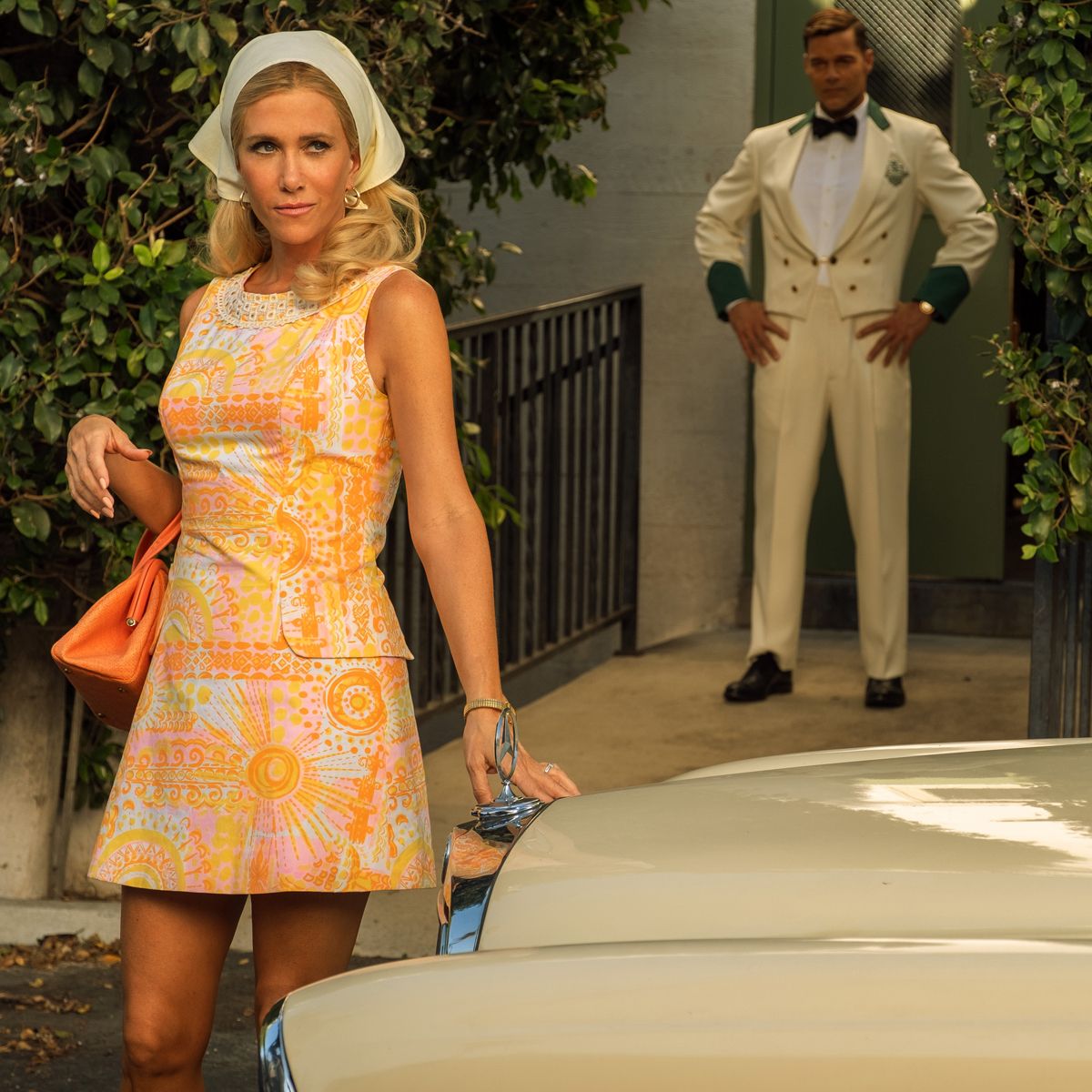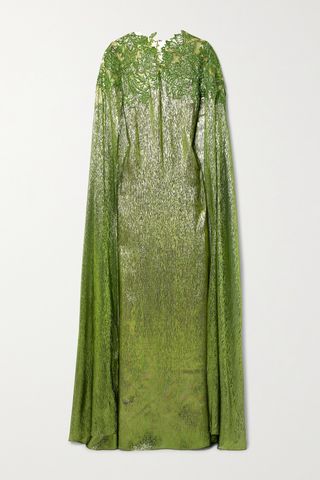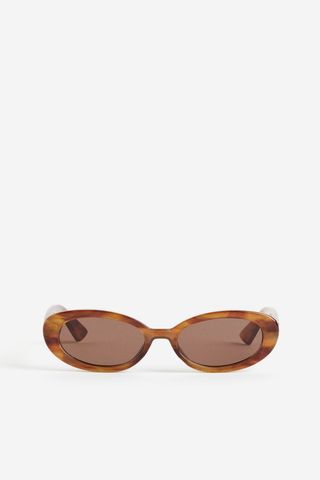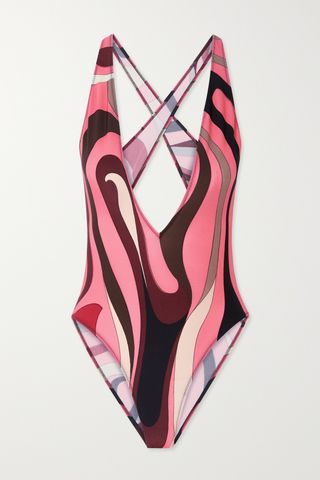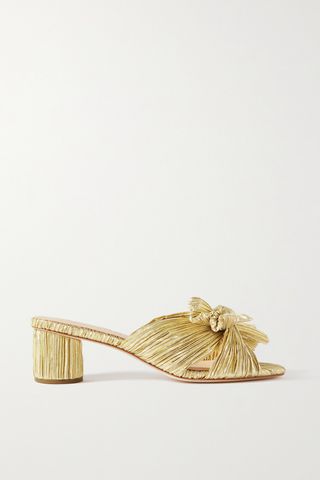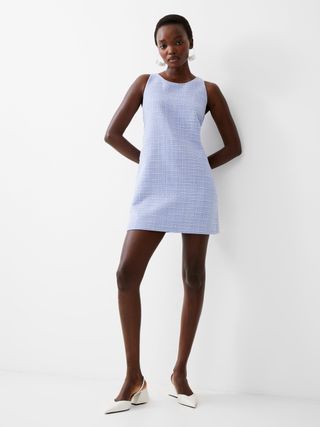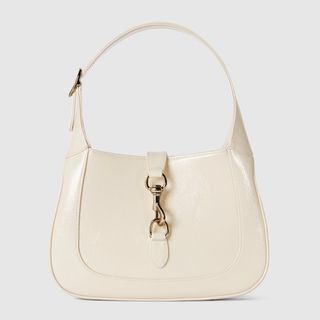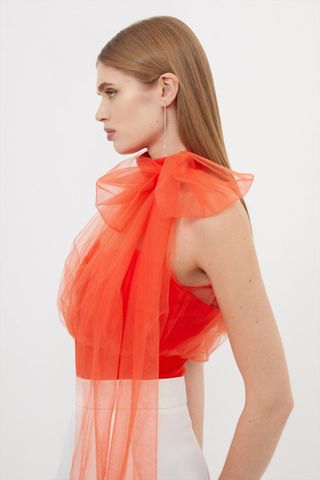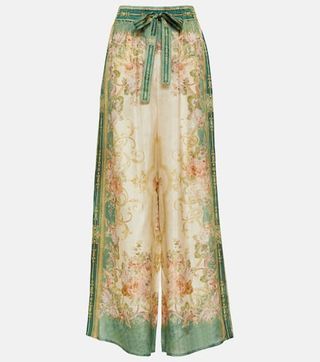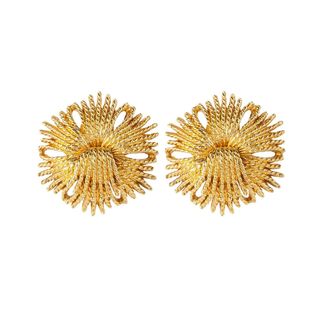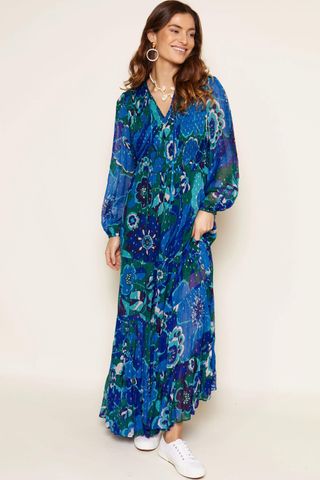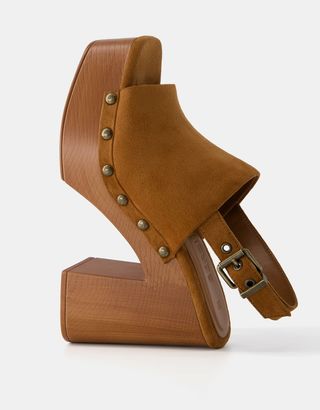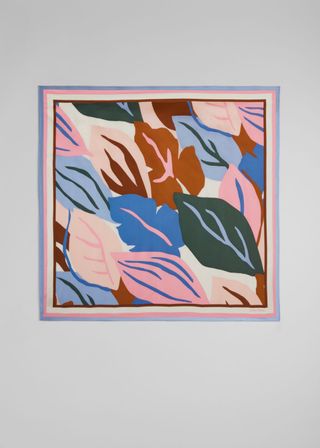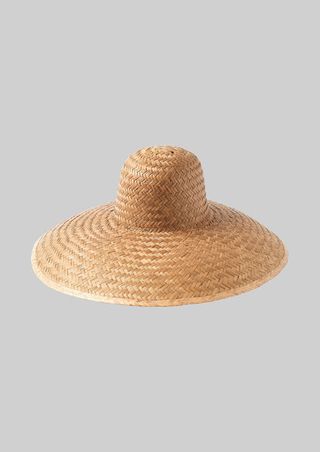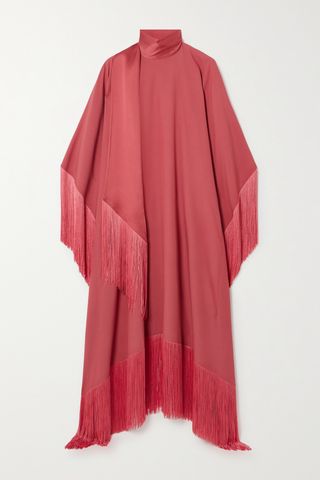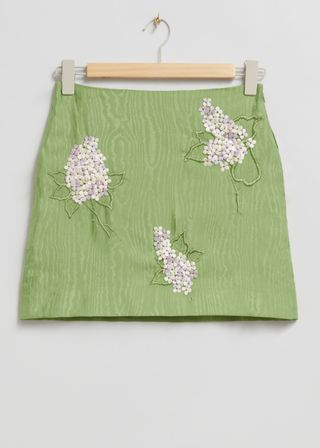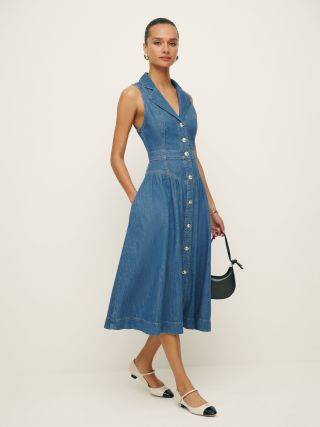Grab your lamé gown and Gucci Jackie, we’re going to the Palm Royale! What’s the Palm Royale, you ask? Oh, just the glitziest, most exclusive club in Palm Beach, Miami, and, unlike Maxine Dellacorte Simmons, you don’t need to clamor over the back wall to get in…
Set against the heady backdrop of 1969, Palm Royale is Apple TV+’s newest comedy mini-series and believe me; it is a feast in every way. Star-stuffed is an understatement: Kristen Wiig takes on the central role of the plucky Simmons, a former pageant girl who, having grown tired of her native, lacklustre Tennessee and with an insatiable appetite for all things glamorous, makes her way to Florida’s technicolor Palm Beach with one goal: to become a somebody. Her route of choice? Through the gilded, impenetrable gates of the Palm Royale, a luxurious, members-only sanctum where high society women spend their days knocking back cocktails, backstabbing for sport and enjoying varied physical pursuits with their limber tennis instructors. Their husbands? They busy themselves making ill-advised business deals, playing boozy rounds of golf and evading the Feds. Simmons wants in, and she’s not going to let a little thing like being penniless stand in her way.
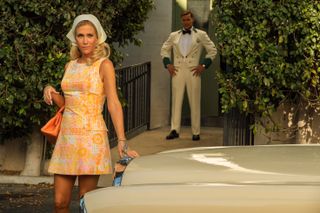
(Image credit: Courtesy of Apple TV+)
Allison Janney’s Evelyn, Palm Royale‘s queen bee, smells the riff-raff-stench a mile off and sets about trying to send Simmons back from whence she came while clutching on as best she can to her crown, which everyone at the Palm Royale (including her clique) is coming for. Rounding off the ensemble is Laura Dern as Lydia, a denim-clad feminist who may not be all she seems; Kaia Gerber as Mitzi, a manicurist with modelling dreams; Ricky Martin as Robert, a war veteran-turned-waiter at the club, and screen icon Carol Burnett who makes being in a coma look downright fabulous as Palm Beach’s high priestess, Norma.
The show has substance, you only need look at the starry cast list to know that, but make no mistakeâ€�style is just as integral to Palm Royale. Between the sprawling, candy-hued sets to the expertly-quaffed hair and precision cat-eye flicks, I get second-hand stress thinking about the work that lay before the team tasked with bringing Palm Royale to life. Costume designer Alix Friedberg, however, was up to the challenge. Like Simmons, Friedberg wanted in. “I didn’t have to read the scriptâ€�I just knew I wanted to be in the Palm Royale world,” Friedberg told me over our Zoom call last week. “Looking back now, it was the most exciting, joyful project I’ve ever worked on, and this is my 30th year doing costumes. It was an unbelievable gift of a job.”
The process is very specific to the actor, what they can pull off, and what suits them.
I’m sure you’ll have seen Friedberg’s work before. The designer has outfitted countless shows and movies, including Big Little Lies, True Detective, Sharp Objects and Luckiest Girl Alive. However, I have to wonder if anything could prepare someone, no matter how seasoned they may be, for the task of dressing Palm Royale. One of the first things that struck me from episode one was the level of detail the series has gone to. So, how did Friedberg begin fleshing out the Palm Royale aesthetic? I had visions of a gigantic mood board populated with sepia-tinged polaroids and paisley fabric swatches. Turns out, I wasn’t too far off.
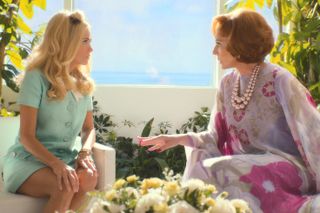
(Image credit: Courtesy of Apple TV+)
“The first thing that I do is I usually start with the main character and build out that character,” says Friedberg. In this case, that’s Maxine Simmons. “Starting with vintage fashion magazines and photographyâ€�there’s a lot of really brilliant photographers at the time. We dug around in the Slim Aaron’s world quite a bit. Getting Maxine’s palette and her journey together and then building the other women around that is the way that I started. The process is very specific to the actor, what they can pull off, and what suits them.” Friedberg consulted with the cast early on as she and the actors worked together to bring their characters to life. Not only did this help to build out their wardrobes, but it also helped better frame their on-screen personalities.
Friedberg demonstrates this in how the outfits vary depending on which side of Clear Lake we find ourselves in. Flitting from the frothy, colorful and divine, not unlike the Grasshopper cocktails Simmons dutifully guzzles when at the club, to the more muted, wearable, brown ensembles worn by characters who reside in down-to-earth West Palm Beach, Friedberg balances the two in a way we don’t feel the need to question.
“With Kristen’s early fittings, I had sent her some images, and we talked a lot about hair and makeup and what Maxine, with her childlike optimism, would be like. It wasn’t until she put the foundation garments on and started to see the colors against the tan skin that her walk kind of evolved. Her Barbie-like personality came out in the fitting room, and I think she would probably say the same thing, that those initial fittings really helped her to say, ‘Okay, now I know who this woman is’ and ‘This is how I’m gonna play her’.”
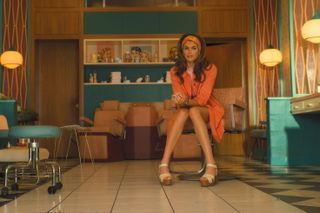
(Image credit: Courtesy of Apple TV+)
At the risk of stating the obvious, the ’60s actually happened (the 1969 moon landing is still hotly debated, but that’s a conversation for a different article). As such, I was interested to learn how Friedberg stuck the balance of ensuring the costumes reflected what people wore at that time whilst also feeding into the larger-than-life splendor of Palm Royale. Did she take any artistic licenses, or was authenticity paramount? “The late ’60s [was] such a theatrical period, we didn’t need to take any license because it was there on the racks. 1968 and 1969 were such pivotal times for fashion. And, you know, I’d say 60%, if not more, of the garments you see your actual vintage, and maybe we went a tiny bit later or a tiny bit earlier, but it’s very much in that late ’60s bracket. The rest we built, but we built them from vintage patterns and vintage pieces which was special. Aside from shoes, because vintage shoes will often fall apart after you walk a block in them, everything you see in the series is genuine vintage or built from vintage.”
The ’60s brought about so much innovation. It was like all of the shackles of post-war fashion came off.
When you consider how many people are needed to create a cast, from main characters to extras in the background, we’re talking hundreds of people to dress in thousands of articles of vintage clothing. Naturally, I wanted to know how one goes about finding vintage clothes and accessories of that volume that are also in good enough condition to appear in a series such as this, where the fashion is almost a character in itself. “There are vast costume houses in Los Angeles and New York that have extensive archives of vintage fashion, but a lot of it is recycled and has been altered and over-dyed for other projectsâ€�the challenge with our show is that it has to feel bright and fresh and brand new; like someone has just shopped it from Worth Avenue,” says Friedberg. “So I had to turn to a lot of independent vendors around L.A., there’s quite a few in Palm Springs and New York, and of course Etsy! I [worked with a] couple of really, really knowledgeable shoppers who had relationships with different vendors around the U.S. and we would send them a mood board and say, here’s what we’re looking forâ€�we’re doing golf, and this is what we need. And it was astonishing. People got so excited about the show that they were sending us boxes and boxes and boxes of beautiful pieces to work with. It’s like they had been waiting for our show to happen. I have a very long list of people that we worked with via Etsyâ€�I’d be happy to share them with you and your readers!” Friedberg is not a gatekeeper, and I love her for that.
1969 was a time of significant change in the USAâ€�political unrest, the growing gap between the haves and the have-nots, and the fight for female autonomy and feminism are all critical themes woven throughout Palm Royale, and Friedberg’s clothing choices reflect this, too. “There was a rule that there would be no denim at the Palm Royaleâ€�that would be reserved for the feminists at West Palm Beach,” says Friedberg. As for other wardrobe “rules” for Palm Royale, the most challenging to orchestrate was ensuring that no outfit looked out of place with the others on screen or the set behind them. This is a series with very bright ensemble scenes featuring several actors at once, so although Friedberg didn’t shy away from bold colors and zingy prints, she did have to style them with consideration. “In terms of the out-there psychedelics and [other] bold prints of the late ’60s, the production designer and set decorator and I worked incredibly closely to figure out whose work was at the forefront of each scene. Sometimes, it needed to be the fashion; sometimes, it needed to be the set, depending on the scene, the dialogue and what was happening. There were, however, a lot of times that we come together, and it was like, ‘Oh, that’s all big giant paisley [print] on another big giant paisley [print]â€�that’s not going to work!’.”
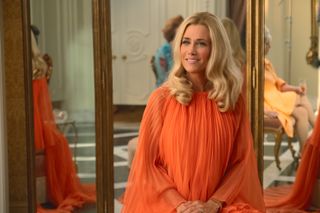
(Image credit: Courtesy of Apple TV+)
We might share a name already, but I would very much like to share Maxine’s wardrobe, too. I wondered if this was Friedberg’s favourite wardrobe to assemble. “Can I pick two?” she beamed. This is a fashion democracyâ€�of course, she can pick two. “Well, actually, there’s three”. We laugh. “I have to say Maxine; [she] was so fun, so fun, and just the trust that Kristen had in us to make that character happen made it [more so]. Creating the Barbie quality, the accessorised version of that with the bows and the tulle, and seeing her transition from this optimistic girl to trying to be a little chicer, it was great to explore that with her. And then, obviously, I can basically retire tomorrow having worked with Carol Burnett.” If I ever fall into a coma, I want someone to paint my face and dress me in feathers like Norma. You have that in writing. ‘Third is, well, everyone else! It really was just the best time.”
During our conversation, I can tell ’60s fashion is a passion of Friedberg’s, with Palm Royale having connected her with so many like-minded people devoting their time and money to preserving this style legacy. But what is it that continues to make ’60s fashion so compelling and relevant now?
“The ’60s brought about so much innovation. It was like all of the shackles of post-war fashion came off. And the structure of the women’s body underneath the garment was different; it wasn’t all about tiny waists and cone-shaped bras anymore. It was about flow, and there was all this interest in world fashion and inspiration from Indian prints to East African prints; it was sort of like the doors opened to a greater sensibility of what was going on in the world. There was also the birth of mod and the space age; it was Pierre Cardin who did all of those really innovative vinyls and plastics, and then minimalist fashion came into play. The ’60s really was an explosion [of fashion]; it was totally theatrical.
“I think that it suits a lot of bodies, too; it’s very fun and playful, and for a lot of people, it’s still very wearable. I don’t think we’ve had a time in the last, I want to even say century, that made as big a statement. There was so much innovation in fashion … we started milling fabrics in a different way. This is when we started to see knits and stretch [materials] and drapery. Technology was a huge part of it.”
Ahead of our interview, I was given access to the whole gambit of Palm Royale episodes, which I unashamedly binged in 24 hours. Now on my second viewing, I realized, mid-way through an episode, I’d opened my phone and started searching for a silk scarf reminiscent of Simmons’s of my own. Between the show and the recent slew of ’60s looks that populated both the spring/summer 2024 and autumn/winter 2024/25 runways, I’m pretty sure Royalecore will be a big thing this summer, so I asked Friedberg what she thinks sums up the aesthetic. “A headscarf is a great one,” when I tell her about my latest purchase. “Get yourself some big, incredibly fabulous sunglasses,” she says. “And don’t be afraid to try new prints. It should be fun. That’s Palm Royale.”
Palm Royale is now available to stream on Apple TV+, with new episodes debuting on Wednesdays weekly.
Get the Palm Royale Look This Season
This post originally appeared on Who What Wear UK.
Read the original article here


